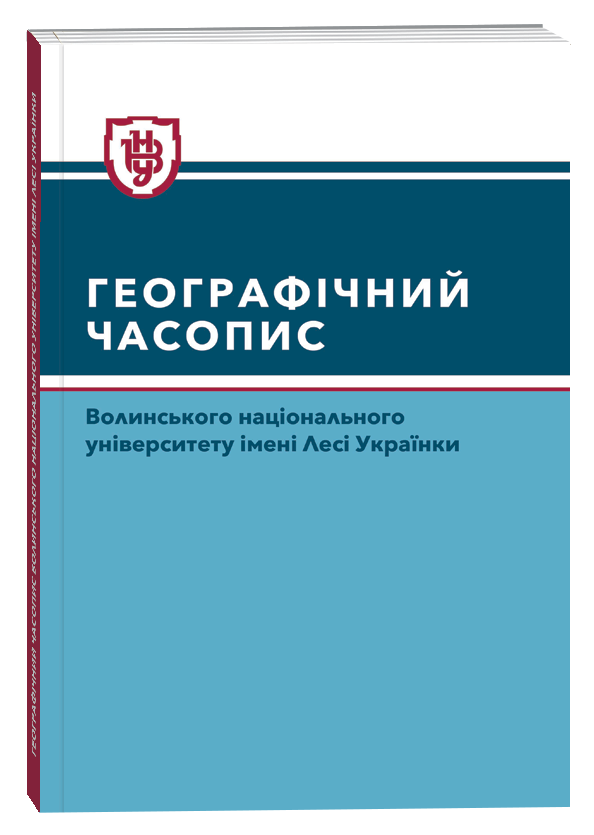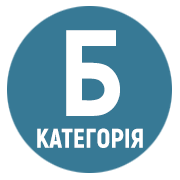THE CONCEPT OF PEDODIVERSITY IN MODERN SOIL SCIENCE
DOI:
https://doi.org/10.32782/geochasvnu.2024.3.01Keywords:
soil, pedodiversity, soil cover, soil structure, heterogeneity, polypedon.Abstract
Abstract. The research of soil cover heterogeneity started to develop actively only in the second half of the twentieth century, so the issue of defining the concept of “soil diversity” (pedodiversity) and identifying quantitative criteria for its assessment has not been studied sufficiently. The purpose of the article is to analyze modern approaches to the interpretation of the concept of pedodiversity, to determine the criteria for its quantitative characterization. The scientific novelty of the publication consists in the comparison of terminology and the state of research on soil diversity in Ukraine and abroad, and the systematization of tendency of subsequent research. Pedodiversity is manifested in the spatial variability of soil properties at a certain taxonomic level of classification. Therefore, the degree of pedodiversity manifestation depends on the chosen scale of research and classification system. It is stated that classification, parametric, genetic and functional approaches can be applied to the definition of the concept of “pedodiversity”. In Ukrainian soil science, the concept of soil diversity corresponds to the doctrine of soil cover structure. The units of soil diversity are small soil contours (polypedones, elementary soil areas), soil associations, landscapes (soil combinations), and regions. To quantify soil diversity abroad, indicators of richness, abundance, entropy indices, as well as indicators characterizing the classification distance of different soil groups are used. Instead, in Ukraine, the quantitative assessment of the soil cover structure is carried out by indicators of the geometric structure of soil habitats, the degree of contrast and heterogeneity. Modern research areas related to the study of soil diversity are systematized, including monitoring of changes under the influence of anthropogenic load, the impact of global climate change on soil diversity, and the use of soil cover heterogeneity indicators for soil mapping and precision agriculture.
References
Биндич Т.Ю. Використання ГІС-технологій для аналізу неоднорідності локальних структур ґрунтового покриву у степовій зоні. Агрохімія і ґрунтознавство. 2013. Вип. 80. С. 17–26.
Гаськевич О.В., Позняк С.П. Структура ґрунтового покриву Гологоро-Кременецького горбогір’я. Львів : Вид. центр ЛНУ ім. Івана Франка, 2007. 208 с.
Медведев В.В. Неоднорідність як закономірний прояв горизонтальної структури ґрунтового покриву. Ґрунтознавство. 2010. Т. 11. № 1–2. С. 6–15.
Радзій В., Позняк С. Структура ґрунтового покриву Волинської височини. Луцьк : Вежа, 2009. 185 с.
Allaby M. Soil association. А Dictionary of Ecology. Oxford University Press. 2010. URL: https://www. oxfordreference.com/view/10.1093/acref/9780199567669.001.0001/acref-9780199567669-e-5218 (дата звернення: 25.02.2024).
Badania ekologiczno-gleboznawcze / R. Bednarek, H. Dziadowiec, U. Pokojska, Zb. Prusinkiewicz. Warszawa : Wydawnictwo Naukowe PWN, 2004. 344 s.
A modelling framework for pedogenon mapping / M.R. Dobarco, A. McBratney, B. Minasny, B. Malone. Geoderma. 2021. Vol. 393. 115012. DOI: https://doi.org/10.1016/j.geoderma.2021.115012.
Soil Horizon Variation: A review / A.E. Hartemink, Y. Zhang, J.G. Bockheim, N. Curi, S.H.G. Silva, J. Grauer- Gray, D.J. Lowe, P. Krasilnikov Adv. Agron. 2020. Vol. 160 (1). P. 125–185.
Agro-ecological assessment of the farmlands of the Hologoro-Kremenetskiy Highlands / O. Haskevych, V. Snitynskyy, P. Hnativ, N. Lahush, V. Haskevych, V. Ivaniuk. Soils Under Stress. Springer, Cham. 2021. Р. 143–151. DOI: https://doi.org/10.1007/978-3-030-68394-8_14.
Pedodiversity: concepts and measures / J.J. Ibán`ez, S. De-Albs, F.F. Bermúdez, A. García-Álvarez. Catena. Vol. 24. Issue 3. 1995. P. 215–232. DOI: https://doi.org/10.1016/0341-8162(95)00028-Q
Spatial distribution characteristics of pedodiversity and its major driving factors in China based on analysis units of different sizes / L. Mengyu, W. Tianwei, L. Zhenyuan, Zh. Tieyang, Ya. Jiawei, L. Nian, L. Zhaoxia. Catena, 2021. Vol. 207. 105701. DOI: https://doi.org/10.1016/j.catena.2021.105701.
Soil Diversity (Pedodiversity) and Ecosystem Services / E.A. Mikhailova, H.A. Zurqani, C.J. Post, M.A. Schlautman, G.C. Post. Land. 2021. Vol. 10. 288 p. DOI: https://doi.org/10.3390/land10030288.
Minasny B., McBratney A.B., Hartemink A.E. Global pedodiversity, taxonomic distance, and the World Reference Base. Geoderma. 2010. Vol. 155, Is. 3–4. P. 132–139. DOI: https://doi.org/10.1016/ j.geoderma.2009.04.024.
Papa G.L., Palermo V., Dazzi C. The “genetic erosion” of soil ecosystem. International Soil and Water Conservation Research. 2013.Vol. 1. N 3. P. 11–18.
Petersen A., Gröngröft A., Miehlich G. Methods to quantify the pedodiversity of 1 km2 areas – results from southern African drylands. Geoderma. 2010. Vol. 155, Is. 3–4. P. 140–146. DOI: https://doi.org/10.1016/j.geoderma.2009.07.009.
On measuring pedodiversity / A. Petersen, A. Gröngröft, G. Miehlich, A. McBratney, В. Minasny. Geoderma. 2007. Vol. 141, Is. 1–2. P. 149–154. https://doi.org/10.1016/j.geoderma.2007.05.012.
Pedodiversity and Organic Matter Stock of Soils Developed on Sandstone Formations in the Northern Apennines (Italy) / L. Vittori Antisari, W. Trenti, A. Buscaroli, G. Falsone, G. Vianello, M. De Feudis. Land. 2023. Vol. 12. 79. DOI: https://doi.org/10.3390/land12010079.
World reference base for soil resources 2014. International soil classification system for naming soils and creating legends for soil maps. FAO of the UN, Rome. 2015. 192 p.







